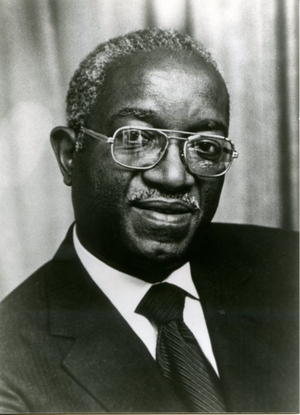WHEN James Byrd was dragged to his death in Jasper, Texas, most Americans reacted with horror. John Hope Franklin, the Duke University historian who chaired President Clinton's advisory board on race relations, reacted with a shrug.
"I don't want to sound callous," Franklin told the Associated Press, "but that's nothing new." Racist incidents occur all the time, he said, citing "the burning of black churches in previous years." The Jasper incident "was just more barbaric" than most. And then, the AP reported, Franklin told a particularly sad story:
"A black high school student . . . worked for weeks on a paper for class and submitted it to his white teacher. It was a first-class paper. You know what she said? 'Who wrote this paper for you?' He was destroyed completely by a casual comment by an insensitive teacher," Franklin said. "He was dragged through the streets and killed, too."
This was not the first time Franklin related the tale of the black schoolboy whose life was "destroyed" by the supposed racism of his white teacher. He had told it 10 months earlier, during a forum in Little Rock, Ark., that was broadcast to 25 US cities. The San Francisco Examiner noted that Franklin "told of a young black student who worked long and hard on an assignment, only to have his teacher ask, 'Where'd you get the paper?' The boy, Franklin said, 'was destroyed,' quit school, and now lives on the streets."
Query: Is Franklin's story true?
Certainly it is dramatic. It powerfully illustrates his contention that white racism, even when not explicit, still shatters black lives. But did it actually happen?
After reading the article in The Examiner, a professor of African history at California State University was moved to contact Franklin and ask for more information. Charles Geshekter, a specialist on East Africa and a three-time Fulbright scholar who studied at Howard University in the 1960s, wanted to know where and when the event occurred and what was done to discipline the teacher who had caused such harm.
 Why won't Duke University professor John Hope Franklin provide corroboration for a disturbing story he has recounted multiple times? |
"I was appalled to learn about this incident," he wrote. "As a university instructor and a member of the ACLU and the Southern Poverty Law Center, I am always distressed to hear about such incidents. Thank you very much for providing me with more particulars."
But Franklin didn't provide Geshekter with more particulars. When nearly five months had elapsed with no reply, the California professor tried again. "I realize that you are extremely busy . . . but I wonder if you would please take the time to answer my questions."
Five more months passed. Finally, late in July, came an answer. "I can provide no more details about the incident," Franklin wrote. "I do not feel free to reveal the name of the school or the young student who was tragically mistreated. I do not wish to expose either him or his family to further unauthorized disclosure."
It is hard to know what Franklin meant by "further unauthorized disclosure" — after all, he was the person disclosing the episode. It is even harder to understand his refusal to corroborate a story that he is in the habit of telling in public.
"As a fellow historian deeply concerned about race matters and historical accuracy," Geshekter wrote in a final letter, "I was distressed that you would voluntarily 'cite' such an inflammatory 'incident' to a member of the press . . . yet be unwilling to provide further specifics." Franklin never replied. But he is not silent about his notion that America still reeks of racism.
"We know we can't repair in a year," he said at Fisk University in July, "the damage that's been done persistently, consistently, and energetically for some 350 years." Listening to him, one would never know that America has made tremendous racial progress in recent decades. He denounces "the idea that we should aspire to a 'colorblind' society" — Martin Luther King's aspiration — as an "impediment." His version of a national dialogue on race is that "the white side has been in control of virtually everything, so they're the ones who need educating on what justice and equality mean." The final report of the president's advisory board quotes Franklin as saying, "This country cut its eye teeth on racism" and it behooves us to understand why we are "so proficient and so expert" at being racists.
It seems unlikely that an eminent professor at Duke, the author of a leading text on black history, would knowingly spread a story for which he can supply no evidence. But then, it would have seemed equally unlikely for him to point to "the burning of black churches" as proof of endemic American racism. As Franklin surely knows, the recent "epidemic" of black church burnings was a media fiction. (More than one-third of the arsonists arrested were black, nearly half the churches burned were white, several fires were accidental, and the annual number of church fires is not rising, but falling.)
So what about the story of the black youth driven into homelessness by his teacher's insensitivity? Is it true? Hoping to succeed where Geshekter failed, I called Franklin several times over the past month. I left messages at Duke and at his home office. I explained why I was calling and described the information I was seeking. Twice I was told he would call back "next Monday." So far, I've heard nothing.
(Jeff Jacoby is a columnist for The Boston Globe).
-- ## --
Follow Jeff Jacoby on Twitter.
Discuss his columns on Facebook.
Want to read more? Sign up for "Arguable," Jeff Jacoby's free weekly email newsletter.

